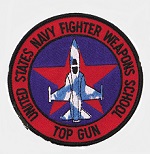Hobby Master HA1406 US Navy McDonnell Douglas A-4E Skyhawk Attack Aircraft - VA-126 [Aggressor Scheme] (1:72 Scale)
"Television brought the brutality of war into the comfort of the living room. Vietnam was lost in the living rooms of America - not on the battlefields of Vietnam."
- Marshal McLuhan
 The A-4 Skyhawk is an attack aircraft originally designed to operate from United States Navy aircraft carriers. Fifty years after the type's first flight, some of the nearly 3,000 Skyhawks produced remain in service with smaller air arms around the world. The aircraft was formerly the A4D Skyhawk, and was designed by the Douglas Aircraft Corporation, later McDonnell Douglas, now Boeing.
The A-4 Skyhawk is an attack aircraft originally designed to operate from United States Navy aircraft carriers. Fifty years after the type's first flight, some of the nearly 3,000 Skyhawks produced remain in service with smaller air arms around the world. The aircraft was formerly the A4D Skyhawk, and was designed by the Douglas Aircraft Corporation, later McDonnell Douglas, now Boeing.
The Skyhawk was designed by Douglas' Ed Heinemann in response to a U.S. Navy call for a jet-powered attack aircraft to replace the A-1 Skyraider. Heinemann opted for a design that would minimize size, weight, and complexity. The result was an aircraft that weighed only half of the Navy's specification and had a wing so compact that it did not need to be folded for carrier stowage. The diminutive Skyhawk soon received the nicknames "Scooter", "Bantam Bomber", "Tinker Toy Bomber", and, on account of its nimble performance, "Heinemann's Hot-Rod."
The Navy issued a contract for the type on June 12th, 1952, and the first prototype first flew on June 22nd, 1954. Deliveries to Navy and U.S. Marine Corps squadrons commenced in late 1956.
The Skyhawk remained in production until 1975, with a total of 2,960 aircraft built, including 555 two-seat trainers. The US Navy began removing the aircraft from its front-line squadrons in 1967, with the last retiring in 1975. The Marines would pass on the A-7 Corsair II. The last USMC Skyhawk was delivered in 1979, and were used until the mid-1990s until they were replaced by the similarly small, but V/STOL vertical landing AV-8 Harrier.
This particular 1:72 scale replica of an US Navy A-4E Skyhawk attack aircraft was flown by VA-126 during the Navy's "Top Gun" exercises.
Sold Out!
Dimensions:
Wingspan: 4-3/4-inches
Length: 6-3/4-inches
Release Date: March 2008
 Historical Account: "Top Gun" - TOPGUN is the popular name of the United States Navy Strike Fighter Tactics Instructor (SFTI) program. SFTI is the modern-day evolution of the United States Navy Fighter Weapons School and carries out the same specialized fighter training as NFWS had from 1969 until 1996, when it was merged into the Naval Strike and Air Warfare Center at NAS Fallon, Nevada.
Historical Account: "Top Gun" - TOPGUN is the popular name of the United States Navy Strike Fighter Tactics Instructor (SFTI) program. SFTI is the modern-day evolution of the United States Navy Fighter Weapons School and carries out the same specialized fighter training as NFWS had from 1969 until 1996, when it was merged into the Naval Strike and Air Warfare Center at NAS Fallon, Nevada.
TOPGUN initially operated the A-4 Skyhawk and borrowed USAF T-38 Talons to simulate the flying characteristics of the MiG-17 and MiG-21 respectively. The school also made use of Marine-crewed A-6 Intruders and nearby USAF F-106 aircraft when available. Later, the T-38 was replaced by the F-5E Tiger.
During the halt in the bombing campaign against North Vietnam (in force from 1968 until the early 1970's), TOPGUN established itself as a center of excellence in fighter doctrine, tactics and training. By the time aerial activity over the North was resumed, every Navy squadron had its share of TOPGUN graduates. According to the US, the results were dramatic as the Navy kill-to-loss ratio or exchange rate against the North Vietnamese Air Force (NVAF) MiGs soared to over 20:1 before ultimately settling at 12.5:1.
The success of the U.S. Navy fighter crews vindicated the fledgling DACT school's existence and led to TOPGUN becoming a separate, fully funded command in itself, with its own permanently assigned aviation, staffing and infrastructural assets. Successful TOPGUN graduates who scored air-to-air kills over North Vietnam and returned to instruct included "Mugs" McKeown and Jack Ensch, and the first U.S. aces of the Vietnam War, Randy "Duke" Cunningham and Willie Driscoll.
Meanwhile the USAF did not see much dramatic improvement from its fighter crews over Vietnam. It was after that war's end that they adopted a similar type of training program of their own using dedicated Aggressor squadrons. This program would later become known as Red Flag at the US Air Force Fighter Weapons School. (courtesy: Wikipedia)





 Awesome Aircraft
Awesome Aircraft 


